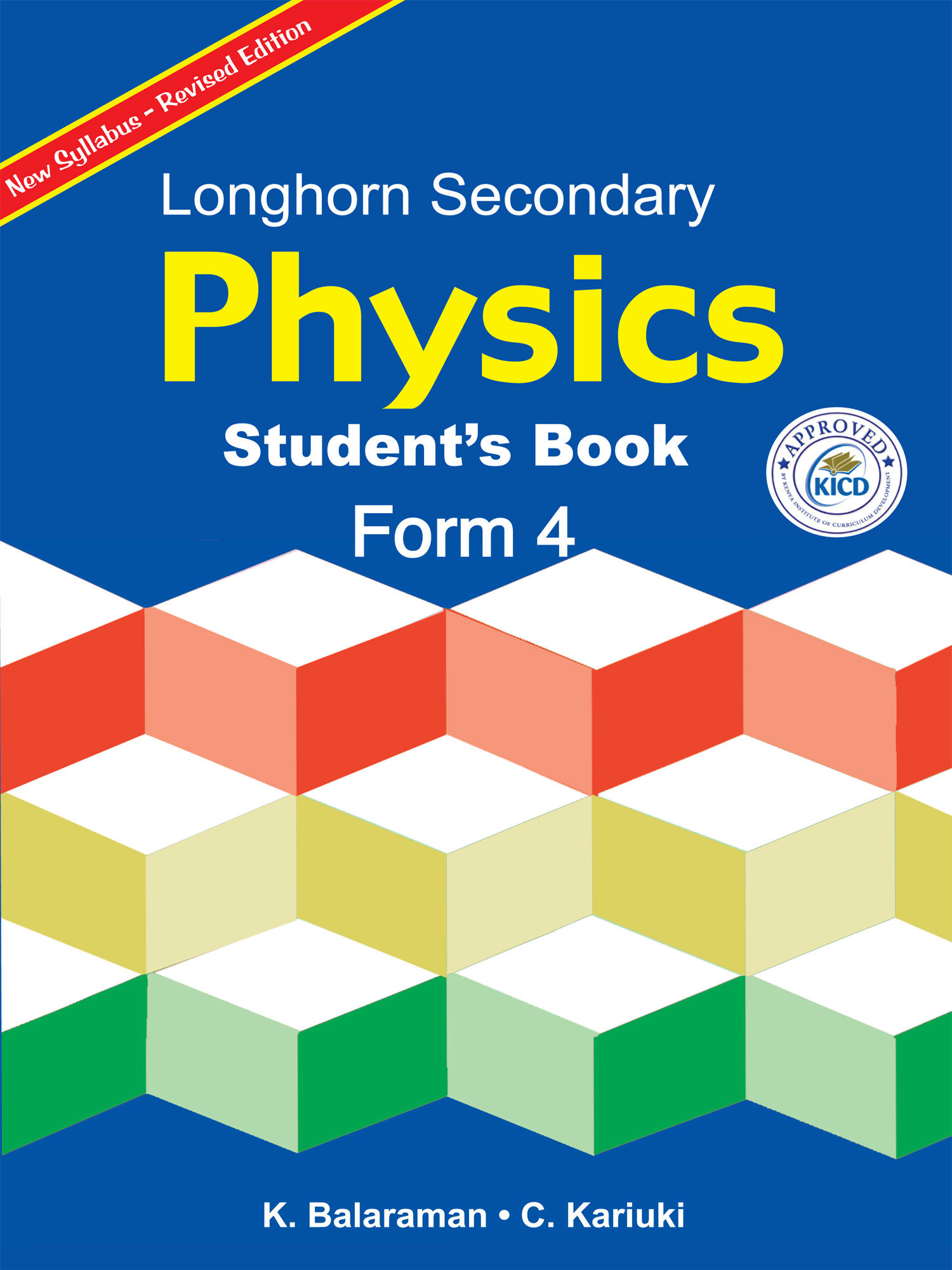
Authors
K. Balaraman, C. KariukiExercises kit’s authors
K. Balaraman, C. KariukiPublisher
Longhorn Publishers
Included in packages

-
The study kit contains 75 chapters and 14 exercises of which 14 are in the chapters and 0 in the task exercises.
-
Authors
K. Balaraman, C. Kariuki -
Exercises kit’s authors
K. Balaraman, C. Kariuki -
Subject
Physics -
Grade
Form 4 -
Kit's language
English -
Publisher
Longhorn Publishers -
Included in packages
1. Thin lenses
2. Uniform Circular Motion
Lead |
Chapter |
|---|---|
| 2.1. | Angular displacement and angular velocity |
| 2.2. | Circular motion and centripetal force |
| 2.3. | Applications of uniform circular motion |
| 2.4. | Summary and Revision exercise 2 |
3. Floating and Sinking
Lead |
Chapter |
|---|---|
| 3.1. | Upthrust |
| 3.2. | Archimedes’ principle |
| 3.3. | Law of flotation |
| 3.4. | Relative density (R.D) |
| 3.5. | Applications of Archimedes’ principle and relative density |
| 3.6. | Project work: Construction of a hydrometer |
| 3.7. | Summary and Revision exercise 3 |
4. The Electromagnetic Spectrum
Lead |
Chapter |
|---|---|
| 4.1. | The electromagnetic spectrum |
| 4.2. | Methods of detecting electromagnetic radiations |
| 4.3. | Applications of electromagnetic radiations |
| 4.4. | Greenhouse effect |
| 4.5. | Summary and Revision exercise 4 |
5. Electromagnetic Induction
6. Mains Electricity
Lead |
Chapter |
|---|---|
| 6.1. | Sources of mains electricity |
| 6.2. | Electrical power transmission |
| 6.3. | Domestic wiring system |
| 6.4. | Kilowatt-hour, consumption and cost of electrical energy |
| 6.5. | Summary and Revision exercise 6 |
7. Cathode rays and cathode ray tube
Lead |
Chapter |
|---|---|
| 7.1. | Production of cathode rays |
| 7.2. | Properties of cathode rays |
| 7.3. | Cathode ray oscilloscope (C.R.O.) |
| 7.4. | Uses of cathode ray oscilloscope |
| 7.5. | Television tube |
| 7.6. | Summary and Revision exercise 7 |
8. X-rays
Lead |
Chapter |
|---|---|
| 8.1. | X-rays |
| 8.2. | Energy changes in an X-ray tube |
| 8.3. | Hard and soft X-rays |
| 8.4. | Properties of X-rays |
| 8.5. | Dangers of X-rays and precautions |
| 8.6. | Uses of X-rays |
| 8.7. | Summary and Revision exercise 8 |
9. Photoelectric effect
10. Radioactivity
Lead |
Chapter |
|---|---|
| 10.1. | Radioactivity |
| 10.2. | Types of radiations emitted and their properties |
| 10.3. | Detectors of radiation |
| 10.4. | Nuclear fission and fusion |
| 10.5. | Dangers of radioactivity |
| 10.6. | Applications of radioactivity |
| 10.7. | Summary and Revision exercise 10 |
11. Electronics
Lead |
Chapter |
|---|---|
| 11.1. | Conductors, semiconductors and insulators |
| 11.2. | Intrinsic semiconductors |
| 11.3. | Extrinsic semiconductors |
| 11.4. | Doping in semiconductors |
| 11.5. | How a p-n junction diode works |
| 11.6. | Applications of p-n junction diode |
| 11.7. | Project work: Construction of a simple radio receiver |
| 11.8. | Summary and Revision exercise 11 |
